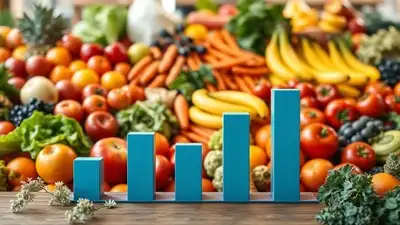India’s retail inflation, based on the Consumer Price Index (CPI), dropped to 3.16% in April 2025, a significant decrease from March 2025’s 3.34%. This marks the lowest year-on-year inflation rate since July 2019. Let’s delve into the top five factors driving this change and how they impact India’s economic landscape.
1. Food Prices: The Biggest Factor Behind Inflation Decline
One of the most significant contributors to the reduction in CPI inflation was the sharp decline in food inflation. In April 2025, food inflation dropped to 1.78% YoY, with notable decreases in vegetable prices, which fell to a record -10.98%.
- Vegetable prices: -10.98% in April, down from -7.04% in March.
- Pulses: -5.23%, a significant drop from -2.73% in March.
- Milk and Dairy Products: 2.72%, still contributing to inflation but at a lower rate.
2. Rural vs. Urban Inflation Trends
The rural sector saw a larger reduction in food inflation, with a decrease to 2.92% in April from 3.25% in March. Urban inflation was slightly higher, but still showed a downward trend, falling to 3.36% in April from 3.43% in March 2025. The impact of food price reductions was more pronounced in rural areas, where agriculture plays a larger role in household spending.
3. Housing and Clothing Inflation Stabilizing
Inflation in housing costs remained stable, with a slight decrease from 3.03% in March to 3.00% in April. Clothing and footwear inflation also saw a minimal increase from 2.62% in March to 2.67% in April 2025.
4. Energy Prices and Fuel Inflation
Fuel and light inflation remained steady at 2.92%, which reflects global energy price movements. While energy prices are not as volatile as food prices, they still play an essential role in shaping overall inflation trends. Global factors such as crude oil prices influence India’s inflation, as detailed by the Investing.com energy section.
5. Economic Forecasts and Monsoon Expectations
Experts, including Aditi Nayar from ICRA, predict that inflation will remain below 4% in the coming months. The forecast of an above-normal monsoon in 2025 is expected to keep food prices stable, while the recent dip in crude oil prices has also relieved some pressure on fuel costs. For more detailed projections on India’s inflation, refer to ICRA’s official website.
The Reserve Bank of India (RBI) is likely to continue focusing on growth rather than inflation, given the expected economic conditions. The possibility of rate cuts remains on the table, especially if CPI inflation stays subdued through mid-2025. Keep an eye on RBI’s latest announcements for official updates.
Conclusion
The significant reduction in CPI inflation in April 2025 provides a welcome sign for India’s economy. While food inflation remains volatile, the overall decline in retail inflation should ease pressure on consumers and the broader economic environment. As we look ahead, continued monitoring of food prices and energy costs will be crucial for assessing inflation trends in the second half of 2025.
Related Reading:
Stay tuned for more updates on India’s inflation trends as we continue to track the economic landscape throughout 2025.


